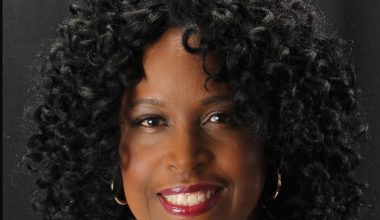Basic Information
| Field | Details |
|---|---|
| Full Name | John David Mcaffee |
| Birth | September 18, 1945, Cinderford, Gloucestershire, England (on a U.S. Army base) |
| Death | June 23, 2021, Sant Esteve Sesrovires, Spain |
| Nationality | British-American |
| Grew Up | Salem, Virginia, United States |
| Education | B.S. in Mathematics, Roanoke College (1967); Honorary Doctor of Science (2008); began but did not complete doctoral studies |
| Occupations | Programmer, entrepreneur, cybersecurity pioneer, investor, political candidate |
| Years Active | 1968–2021 |
| Notable Company | McAfee Associates (founded 1987) |
| Political Campaigns | Libertarian presidential runs in 2016 and 2020 |
| Parents | Don McAfee (father), Joan Williams (mother) |
| Spouses | Fran (c. 1968, divorced), Judy Chambliss (c. 1987–2002), Janice Dyson (married 2013) |
| Children | Claimed 47 children, along with 61 grandchildren and 19 great-grandchildren (unverified) |
Early Life and Education
John Mcaffee’s story began in 1945 on an army base in England and unfolded in the shadowed alleys of the American South. Raised in Salem, Virginia, he endured a violent home life marked by an abusive father who died by suicide when John was 15. That shock—like a fault line running beneath his psyche—reverberated for decades, coloring his appetite for risk, reinvention, and escape.
Academically gifted, Mcaffee studied mathematics at Roanoke College, graduating in 1967. He began doctoral work shortly after but never completed it. Roanoke later conferred an honorary Doctor of Science on him in 2008, a nod to a maverick who had already reshaped a new frontier: the digital immune system.
Building and Leaving the Antivirus Empire
In the late 1960s and early 1970s, Mcaffee coded for NASA, then moved through Univac, Xerox, Computer Sciences Corporation, Booz Allen Hamilton, and Lockheed. He was a roving engineer at the dawn of networked computing, absorbing the practices and weaknesses of sprawling systems. The Brain virus of 1986, one of the first known PC viruses, jolted him into action.
He founded McAfee Associates in 1987 and launched VirusScan, among the first widely distributed commercial antivirus products. By the end of the 1980s, the company was generating roughly $5 million a year, riding a wave of new malware and public anxiety into boardrooms across America. Mcaffee stepped down as CEO in 1993 and sold his stake in 1994. Years later, in 2010, the firm—by then a corporate heavyweight—was acquired by Intel in a multibillion-dollar deal. Mcaffee himself had already moved on, restless and eager for the next experiment.
Selected Career Timeline
| Year(s) | Role/Company | Notable Impact |
|---|---|---|
| 1968–1970 | Programmer, NASA | Early systems programming experience |
| 1970s–1980s | Univac, Xerox, CSC, Booz Allen, Lockheed | Systems design and security exposure |
| 1987 | Founded McAfee Associates | Commercialized antivirus software |
| 1993–1994 | Resigned CEO, sold stake | Cashed out early; company continued ascent |
| 1994 | Tribal Voice (PowWow chat) | Early internet communications venture |
| 2000–2001 | Yoga retreat, authored books | Personal reinvention phase |
| 2010 | QuorumEx (Belize) | Biotech-style herbal antibiotics concept |
| 2016–2018 | MGT Capital (cyber/crypto mining) | High-volatility pivot to crypto |
| 2018 | CEO, Luxcore | Further crypto-security efforts |
Family and Personal Relationships
Mcaffee’s personal life was a maze of marriages, girlfriends, claims, and complicated loyalties. He married three times. His first wife, Fran, entered his life around the end of his graduate studies; the marriage ended, quietly and without public detail. His second wife, Judy Chambliss, a former flight attendant, married him during his tech ascent, with the relationship ending around 2002. His third wife, Janice Dyson, met him in Miami in 2012 amid chaos and headlines; they married in 2013 and remained bound together through his turbulent final years.
During his time in Belize, Mcaffee kept close company with young partners, including Samantha Herrera and Sam Vanegas, relationships that fed the narrative of a man living at full voltage, unafraid of scandal. He often claimed a sprawling family spanning continents—47 children, 61 grandchildren, and 19 great-grandchildren—though names and details are scarce and largely unverified.
Family Snapshot
| Name | Relationship | Notes |
|---|---|---|
| Don McAfee | Father | American road surveyor; died by suicide |
| Joan Williams | Mother | British; raised John in Virginia |
| Fran | First wife | Married c. 1968; little public detail |
| Judy Chambliss | Second wife | Married c. 1987; divorced 2002 |
| Janice Dyson | Third wife | Met 2012; married 2013 |
| Samantha Herrera | Girlfriend | Partner during Belize years |
| Sam Vanegas | Girlfriend | Partner during Belize/Guatemala period |
| Children (claimed) | Children | 47 claimed; identities largely private |
Ventures, Wealth, and Reinventions
Mcaffee’s career—like a series of startups strung across a storm—never stopped mutating. He invested in Zone Labs (makers of the ZoneAlarm firewall), experimented with aviation and “aerotrekking,” tinkered with biotech ideas in Belize, and later dove into cryptocurrencies and security evangelism. He advised and led companies with names that promised cryptographic salvation and digital sovereignty.
Money surged and evaporated. His net worth is widely reported to have peaked near $100 million, then collapsed to about $4 million after the 2008 financial crisis, a fall attributed to housing market losses, legal costs, and the natural entropy of a risk-seeking life. Still, he kept pivoting: to privacy tech, to blockchain mining, to advocacy, to provocation.
Financial and Business Milestones
| Period | Milestone | Approximate Numbers |
|---|---|---|
| Late 1980s | McAfee Associates revenue climbs | ~$5M/year |
| 1994 | Exits McAfee Associates | Early liquidity event |
| 2008–2009 | Post-crisis losses | Net worth reportedly falls to ~$4M |
| 2016–2018 | Crypto mining pivot at MGT | High volatility, high visibility |
| Late 2010s | Multiple crypto/security ventures | Mixed outcomes amid legal heat |
Politics, Principles, and the Public Stage
As a candidate for the Libertarian presidential nomination in 2016 and again in 2020, Mcaffee pitched a creed of radical privacy, limited government, decriminalization, and suspicion of institutional power. He was both evangelist and provocateur—delivering speeches like software patches, each aimed at closing a vulnerability he believed the state had introduced into civic life.
Legal Troubles, Exile, and a Final Descent
The 2010s were marked by raids, accusations, flights across borders, and indictments. In 2012, Belizean authorities raided his property on suspicion of unlicensed drug manufacturing and weapons violations. After a neighbor’s murder—an investigation that shadowed him but did not produce charges—he fled, surfacing in Guatemala and later returning to the United States.
By 2019–2020, U.S. authorities had indicted him for tax evasion and alleged cryptocurrency-related frauds. In October 2020, he was arrested in Spain while awaiting extradition to the United States. On June 23, 2021, Spanish authorities reported his death by suicide in prison. His widow publicly disputed the official conclusion, and, as so often in his life, the final word remained contested.
The Afterlife of a Public Persona
Even in death, John Mcaffee refused to leave the feed. A 2024 documentary rekindled scrutiny of his final months. In early 2025, his dormant social media account abruptly reanimated, hyping a meme coin and an AI “antivirus” persona. Was it a hack? A family-managed revival? A posthumous brand play? The internet did what it does best: speculate wildly. Conspiracy theories proliferated—some darkly comic, others plainly unhinged—illustrating the paradox of his legacy. Mcaffee was a builder of digital immune systems, yet he also became a patient zero for viral myths.
FAQ
When and where was John Mcaffee born?
He was born on September 18, 1945, in Cinderford, Gloucestershire, England, on a U.S. Army base.
Where did he grow up?
He grew up primarily in Salem, Virginia.
What did he study?
He earned a mathematics degree from Roanoke College in 1967 and received an honorary doctorate in 2008.
What is he best known for?
He founded McAfee Associates in 1987 and helped pioneer commercial antivirus software.
How many times was he married?
He was married three times: to Fran, to Judy Chambliss, and to Janice Dyson.
Did he have children?
He claimed 47 children, along with dozens of grandchildren and great-grandchildren, though details are largely unverified.
What happened to his wealth?
His net worth reportedly peaked near $100 million but declined sharply after the 2008 financial crisis.
Did he run for president?
Yes, he sought the Libertarian presidential nomination in 2016 and again in 2020.
What legal issues did he face?
He faced investigations in Belize, U.S. tax evasion indictments, and cryptocurrency-related charges, culminating in arrest in Spain in 2020.
How did he die?
He died on June 23, 2021, in a Spanish prison, with authorities ruling it a suicide; his widow disputed that finding.



